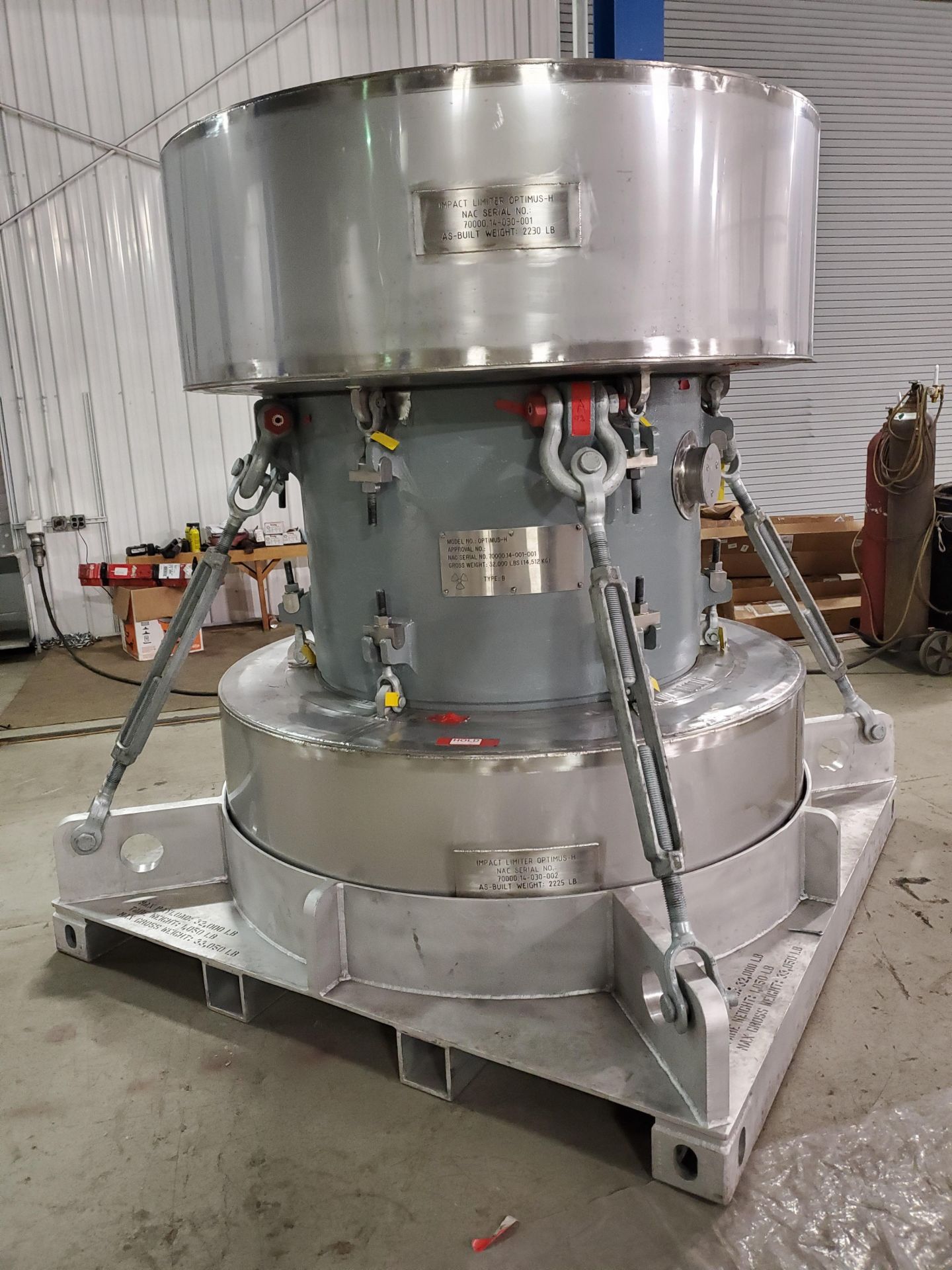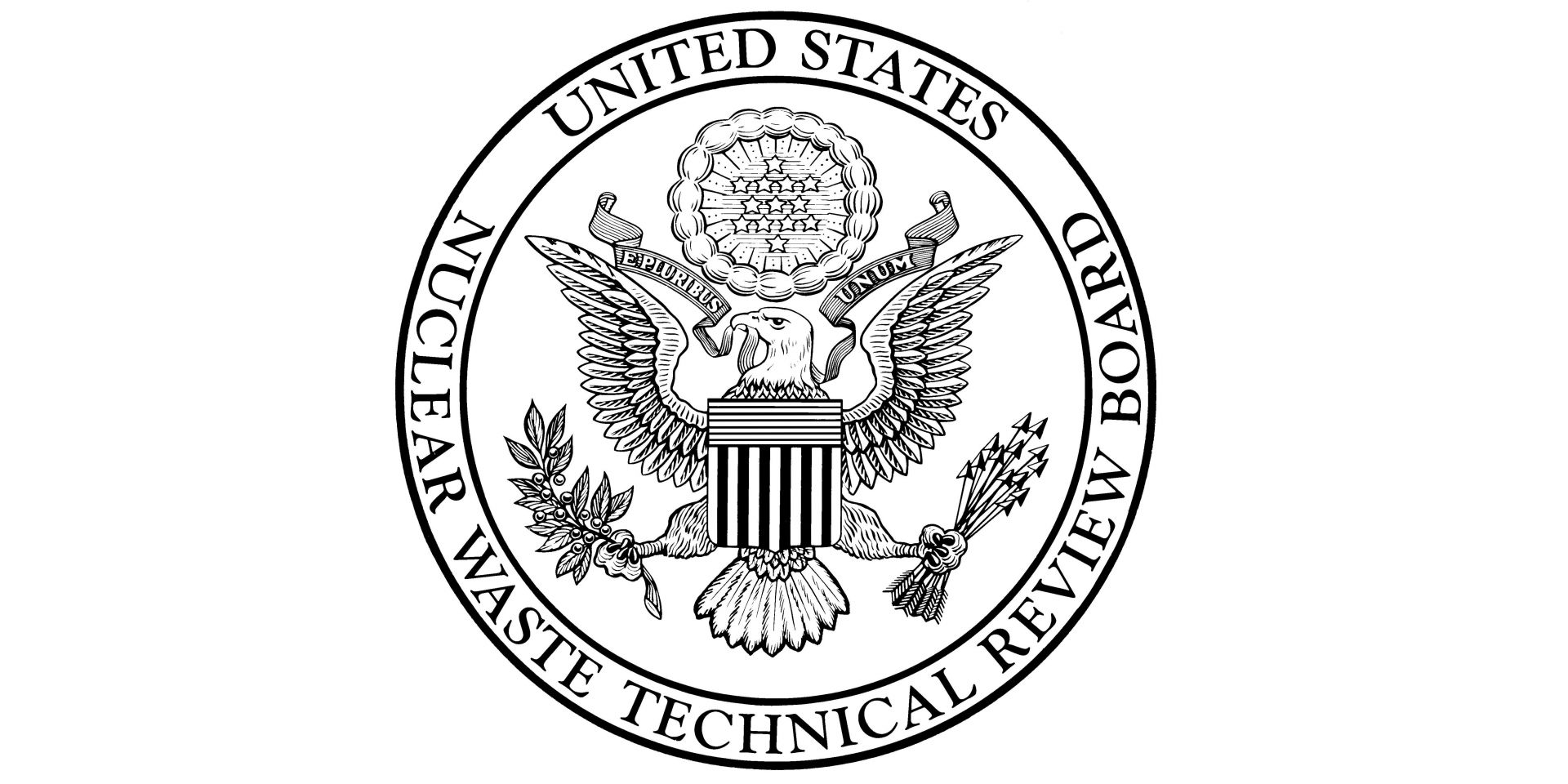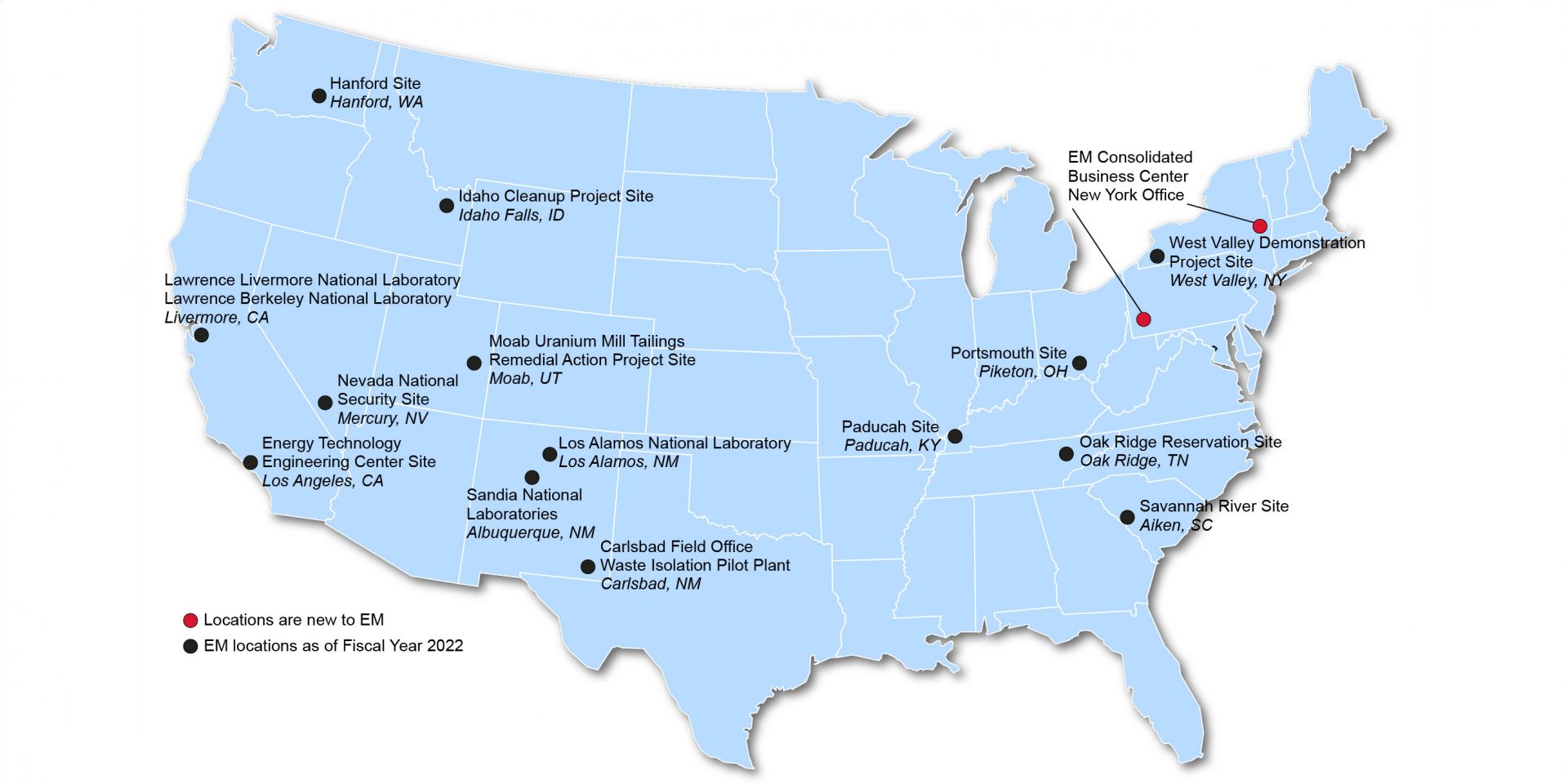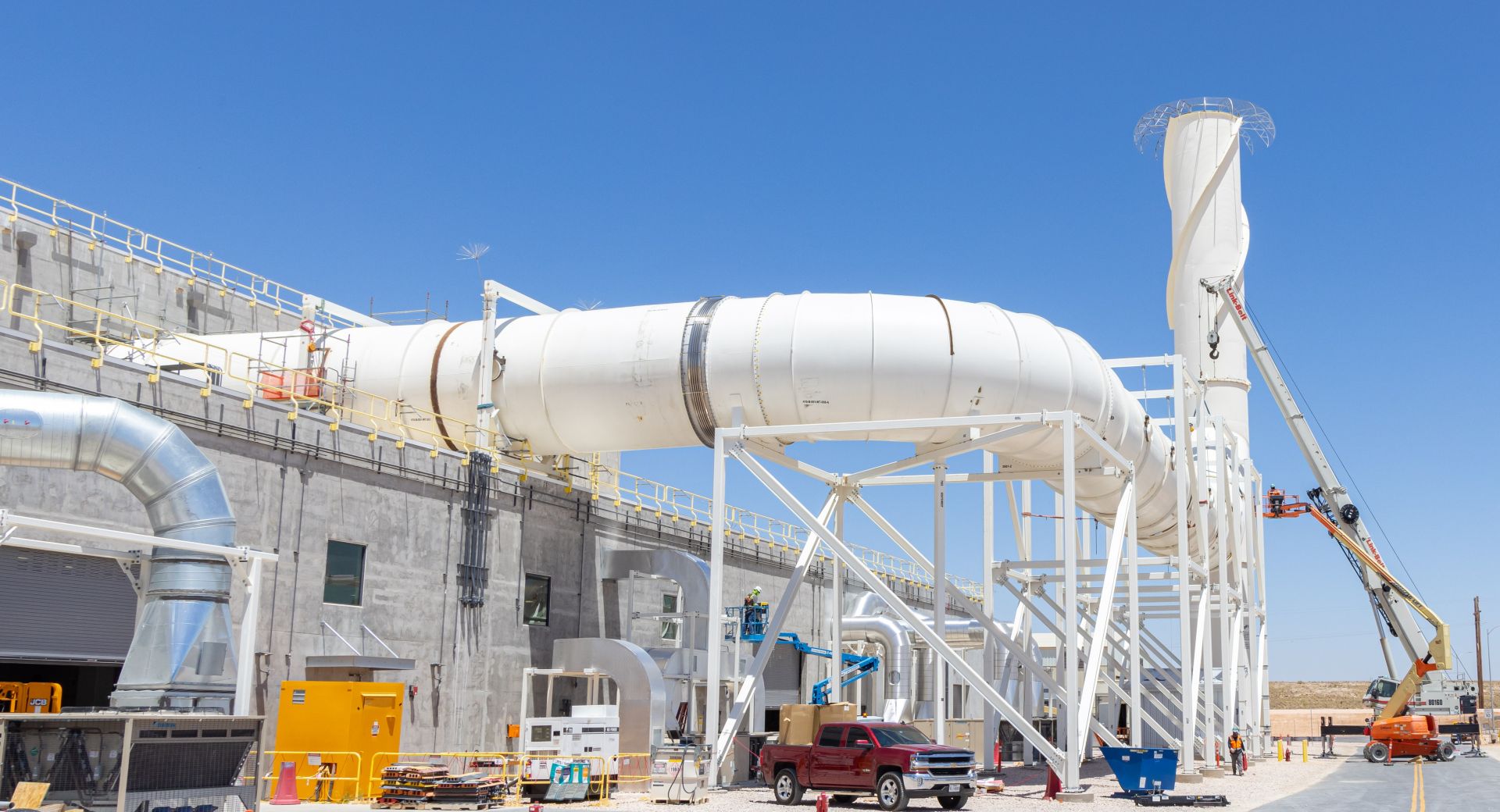The site of the Onkalo deep geological repository near Eurajoki, Finland, with the Olkiluoto nuclear power plant in the background. (Photo: Posiva)
Finland’s waste management organization Posiva announced that it has begun a trial run of placing spent fuel canisters in the Onkalo geologic repository, which is located near the Olkiluoto nuclear power plant in southwestern Finland. No spent fuel will be disposed of during the trial run, which is expected to last several months.
The Atlas railcar carries a simulated shipment of spent nuclear fuel during testing in September 2023. (Photo: DOE)
The Department of Energy has issued a request for information to gather input on its proposed package performance demonstration, which is intended to demonstrate the robustness of spent nuclear fuel transportation casks in hypothetical accident conditions. By simulating severe accident scenarios, the DOE said it intends to show to the public and stakeholders the safety and reliability of transporting SNF by rail, heavy-haul truck, and barge.
Locations of DOE-EM cleanup sites. (Map: GAO)
Despite efforts to increase hiring, the Department of Energy’s Office of Environmental Management continues to be understaffed, according to a recent Government Accountability Office report. The GAO found that, at the end of fiscal year 2023, DOE-EM had 263 vacant positions across its headquarters, cleanup sites, and EM Consolidated Business Center—a vacancy rate of 17 percent. The office is responsible for the cleanup of the environmental legacy waste resulting from decades of nuclear weapons production and government-sponsored nuclear energy research.
The NWMO’s Laurie Swami (center right) congratulates Ignace mayor Kim Baigrie (center left) on the community’s confirmation of its willingness to host a deep geologic repository for Canada’s spent nuclear fuel. (Photo: NWMO)
The township of Ignace in northwestern Ontario has indicated its willingness to host a potential deep geologic repository for Canada’s spent nuclear fuel. The town council voted unanimously on July 10 to pass a resolution indicating its willingness to participate in the Nuclear Waste Management Organization’s (NWMO's) process for selecting a repository site, making it the first Canadian community to officially move forward with the next phase of a site selection process that began in 2010.
The waste management panel, from left: moderator Todd Allen, Fred Dilger of Nevada, Katrina McMurrian of the NWSC, the DOE’s Paul Murray, Jenifer Shafer of ARPA-E, and Kuhika Gupta of the University of Oklahoma. (Photo: ANS)
With increasing demand for clean, reliable, and safe sources of energy, the conversation around nuclear energy is changing. And so too is the conversation around nuclear waste, even as the country struggles to find a path for the disposal of its spent nuclear fuel and high-level radioactive waste. From community engagement, to recycling, to existing success around other forms of nuclear waste management, the conversation around nuclear waste has many different angles, and an executive session of the American Nuclear Society’s 2024 Annual Conference in Las Vegas aimed to delve into some of those discussions.
Construction crews finish work on large ductwork for WIPP’s new SSCVS facility. (Photo: DOE)
The Department of Energy’s Office of Environmental Management announced that it has completed construction of the new large-scale ventilation system at its Waste Isolation Pilot Plant in New Mexico.
Transmutex’s transmutation reactor. (Image: Transmutex)
Switzerland’s national cooperative for the disposal of radioactive waste, Nagra, is distancing itself from recent reports regarding the work of the Geneva-based engineering start-up Transmutex, which claims to have developed a new technology for the transmutation of radioactive waste.
Lourdes Legaspi, engineering automation supervisor (center) and her team are designing pipe and equipment components for the Hanford Site’s partially completed HLW Facility. A collaboration between the DOE and Bechtel National set a foundation for requirements engineers will follow in continuing the design of the facility. (Photo: DOE)
The Department of Energy’s Office of Environmental Management announced that its Office of River Protection (ORP) recently created a plan with contractor Bechtel National for completing the High-Level Waste Facility at the Hanford Site’s Waste Treatment and Immobilization Plant, also known as the Vit Plant.
An aerial view of the Hanford Site’s 200 Area and the Waste Treatment and Immobilization Plant, also known as the Vit Plant. (Photo: DOE)
The U.S. Department of Energy, Washington State Department of Ecology, and U.S. Environmental Protection Agency have reached an agreement on revised plans for managing millions of gallons of radioactive and chemical liquid waste stored in 177 underground tanks at the Hanford Site near Richland, Wash.
An artistic representation of a Desulfosporosinus cell with immobilized uranium on the surface. (Image: B. Schröder/HZDR)
Researchers at the Helmholtz-Zentrum Dresden-Rossendorf (HZDR) research laboratory in Germany have investigated a microorganism capable of transforming water-soluble hexavalent uranium [U(VI)] to the less-mobile tetravalent uranium [U(IV)]. The researchers found that the sulfate-reducing bacterium Desulfosporosinus hippei, a relative of naturally occurring microorganisms present in clay rock and bentonite, showed a relatively fast removal of uranium from clay pore water.
















